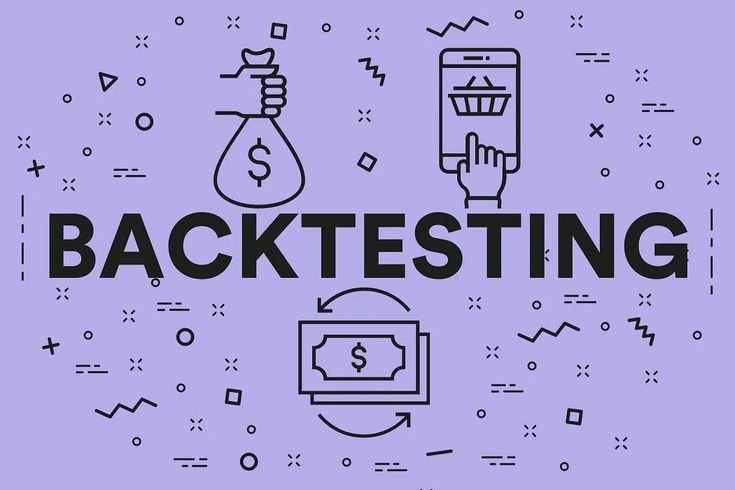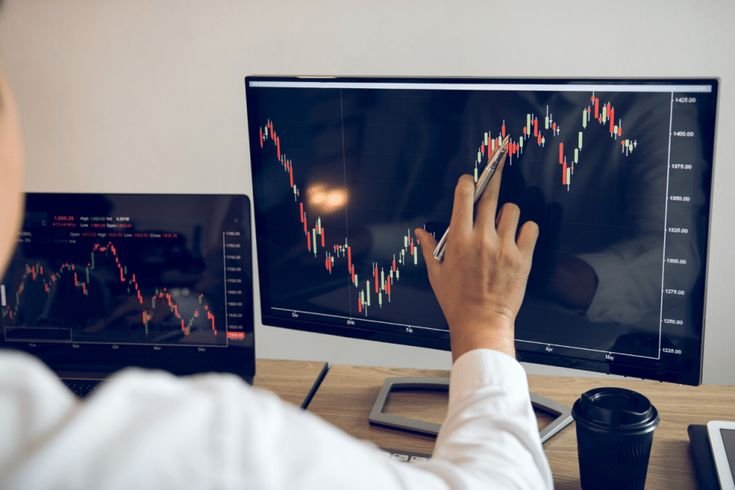🔓 Get All Tools for FREE!
- ✅ Click here to open a trading account using our referral link and start trading.
- 📅 After 7 days of active trading under our referral link, you can get access to all tools in your account.
- ⚠️ Keep trading to keep access free — if you're inactive for 7 days, your access will be removed.
- 👉 Already have an account? You can change the IB (introducing broker) to our referral link ( https://one.exnesstrack.org/a/w7syl3vnjb ) and still qualify!
In fact, backtesting is a very important part of creating and fine tuning trading models and methods. It involves simulation of a strategy alongside past data with the view of ascertaining how the strategy could perform should actual capital be used. Backtesting is without doubts one of the most important tools for any trader, however, it has several traps that are worth to be avoided as they give false positive results. It is important to be familiar with them in order to prevent being misled on the capabilities of the strategy in question.The backtesting is the essential step in constructing and fine-tuning the trading systems and strategies. It is when a given trading strategy is used to analyse past market conditions in the attempt of testing the viability of the particular approach before using it with real money. Backtesting enables traders to compare a strategy’s performance to actual market data in order to assess how the strategy is likely to perform in real life. This article defines backtesting and covers its advantages, procedure, and probable issues with this procedure.

What is Backtesting?
Backtesting refers to the evaluation of the capabilities of a given strategy or model by means of applying this strategy at the stock market with historic data. The fundamental basis is to find out how a particular strategy would have operated in the past which in a way provides to a trader its future outcome. This process is crucial because it allows traders to:This process is crucial because it allows traders to:
1. Evaluate Performance: Find out whether a particular strategy could or could not have made a profit, with specifics.
2. Identify Weaknesses: Identify all the shortcomings in the strategy while playing the game before staking actual money.
3. Optimize Parameters: Adjust the parameters of the strategy to enhance the firm’s achievement of its goals set out in the strategy.
4. Build Confidence: Develop confidence in the strategy through the testing, then the chances of implementing the strategy during high fluctuations in the market are highly likely.
1. Overfitting to Historical Data
Over fitting in trading refers to a situation whereby the trading strategy is tailored to fit previous data. This is especially so when the strategy is tuned to the specific character of the data set whereby the ‘noise’ is harvested instead of the ‘signal’ that reflects the market. As much as the strategy has an outstanding performance in the backtest, it does very poorly in trading because it has low generalization capabilities and thus likely to perform poorly when exposed to other unseen data.
How to Avoid: Out-of Sample Test should be done in a very rigorous manner. Separate the historical data into a training data sets and a validation data sets. It is necessary to build the strategy uniting two parts on the training set and convert it during the testing on the validation set. Further the practice use efficiency of walk forward optimisation tool where the strategy is applied on several division of the data set.
🔓 Get All Tools for FREE!
- ✅ Click here to open a trading account using our referral link and start trading.
- 📅 After 7 days of active trading under our referral link, you can get access to all tools in your account.
- ⚠️ Keep trading to keep access free — if you're inactive for 7 days, your access will be removed.
- 👉 Already have an account? You can change the IB (introducing broker) to our referral link ( https://one.exnesstrack.org/a/w7syl3vnjb ) and still qualify!

2. Look-Ahead Bias
Another common problem is known as look-ahead bias , which is the backtest’s possession of detail that was unavailable at the time a trade was made. This can be experienced if for example today’s stock closer price gets incorporated in the trading signals generated for an earlier time.
How to Avoid: Make sure all information employed to produce trading indications is obtainable at the time a trade would have been made in actuality. This requires some control of the timing of the data entries and the signals that are used in the backtesting process.
3. Survivorship Bias
Another factor is the survivorship bias, which means that in a backtest, one does not consider those stocks that failed or were delisted, went bankrupt, etc. In doing so, this creates a bias whereby the backtest doesn’t factor in the losses from the assets that failed to survive on the account.
How to Avoid: Employ a large set of historical returns that would include firms that are delisted or have gone bankrupt. This is helpful in providing a better picture of market conditions as they obtained at the backtest period.
4. Data-Snooping Bias
Data-snooping bias is vested when a trading strategy is formulated after analyzing a set of data over and over. It might unintentionally fit best, the current trends prevailing in the historical data, and therefore give an inaccurate impression of how well the strategy can predict future events.
How to Avoid: Using Bonferroni correction or similar techniques helps in testing the significance of the strategy and reduce data snooping bias. It’s also important to apply the strategy on one or several datasets from different timelines or markets.
5. Ignoring Transaction Costs
Lack of proper attention to the transaction costs including commissions, spreads and slippages may distort the backtest results by a great deal. A strategy that seems to be profitable when using a backtester will prove unprofitable when these costs are factored in.
How to Avoid: Incorporate realistic estimates of a sets of the transaction costs into the backtest. These should be anchored on records and include effects of liquidity and fluctuations in the market in relation to actual implementation.
6. In this case, no attention has been given to the market impact ubiquitous to changes or innovations instituted in a business entity.
These are issues arising from the fact that large orders can cause movements in the price of the particular asset. In a backtest, this influence often goes unnoticed and therefore results in a gross over estimation of the profitability levels of a strategy in realization.
How to Avoid: Have a look at the potential market consequences of trades, especially if large volumes or turning to low capitalization products are involved. This can be done using variations in the execution price with of the trade in terms of the market depth.
7. Curve Fitting
When done to the extreme, curve fitting is an instance of over-optimization in which the strategy parameters are tweaked to get the optimal set of back-test returns. But this often results in a very good back-test only because its signals are perfectly calibrated or ‘overfit’ to the data set, which precludes that it will do well in live trading.
How to Avoid: Minimize the flow of parameters to be optimized in the system or model to avert the increase of complexity. It is better to follow the strategies derived from the principles and having less number of parameters. Run the strategy on test data, outside of the data that was used in the construction of the strategy, to see if they apply very specifically to certain parameter values.
8. Misinterpreting Backtest Results
The problem with backtesting is not confined to a methodologically improper backtest but extends to the proper one as well since it is possible to interpret the results in a wrong way. For instance, concentrating on the overall return or even the number of successful trades without having a clue of the amount of risk you are exposing yourself to is sheer folly.
How to Avoid: Value various benchmarks of performance such as return on investment adjusted for risk, volatility, the sharp ratio and steadiness. This gives a better outlook of the strategies performance in the organization.
Conclusion
Back testing is very useful when developing trading strategies the problem however is that the results must be analyzed with a pinch of salt. When traders avoid problems such as overfitting, look-ahead bias, and ignoring benefits of transaction costs, they can come up with better and sturdy approaches. This in turn, means that in order to improve its chances of success when traded live, it is important that the backtest is as realistic a simulation of trading conditions as possible.

0 Comments